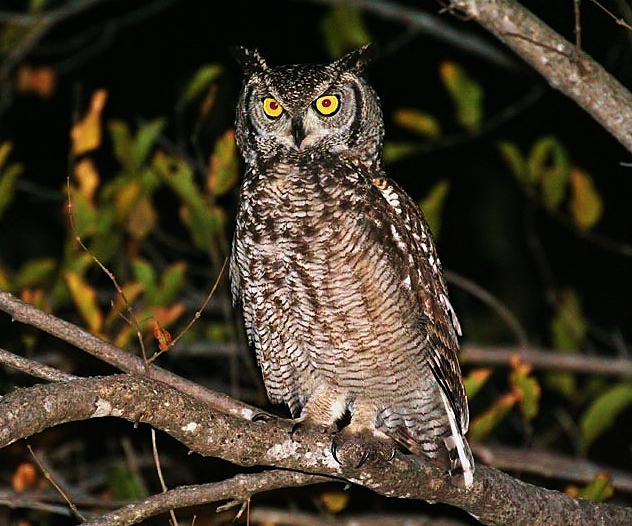 |
| Photo by Johann du Preez (Fotopedia) |
Common name:
spotted eagle owl (en); bufo-malhado (pt); grand-duc africain (fr); búho manchado (es); fleckenuhu (de)
Taxonomy:
Order Strigiformes
Family Strigidae
Range:
This species is widely distributed in sub-Saharan Africa, from Mauritania east to Sudan and Ethiopia, and all the way south to South Africa. It is also found in the Arabian Peninsula, in Saudi Arabia, Oman and Yemen.
Size:
These large owls are 45 cm long and have a wingspan of 100-140 cm. They weigh 480-850 g.
Habitat:
The spotted eagle owl occupies a wide range of habitats, including rocky desert outcrops, woodland and savannah, but generally prefer a mixture of grassland, scrubland and semi-open woodland, or rocky hills with scattered trees and bushes. They are found from sea level up to an altitude of 2.100 m.
Diet:
These birds have an extremely varied diet, including mammals such as rodents, hares and rabbits, bush-babies, fruit bats and mole rats; birds such as falcons, kites, francolins, hornbills, thick-knees and mousebirds; large poisonous snakes and smaller reptiles; amphibians; invertebrates such as spiders, insects, snails, crabs and millipedes; and even dead fish, and carrion.
Breeding:
Spotted eagle owls breed in July-December. The nest is a scrape on the ground, typically sheltered by a bush, grass or rocks. There the female lays 2-4 eggs white eggs which she incubates alone for 29-33 days. The chicks fledge 40-42 days after hatching, but remain with their parents while learning to hunt, only becoming fully independent 2-4 months later.
Conservation:
IUCN status – LC (Least concern)
This species has an extremely large breeding range and is reported to be widespread and common. The population is suspected to be stable in the absence of evidence for any declines or substantial threats.







